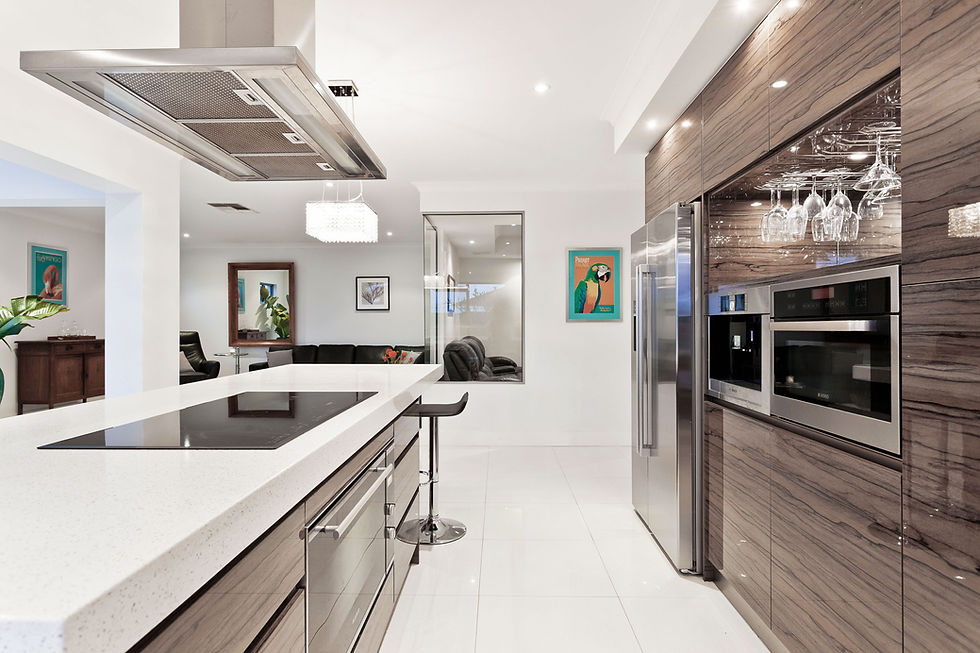
When it comes to flooring, both tile and wood offer a long-lasting beautiful finish for any home. Although the two flooring types differ in many ways, they are typically used in the same areas of the home. Both tile and wood have advantages and disadvantages when it comes to upkeep and installing the floor.
Hardwood Flooring
Pros:
Upkeep is Easy: While spills and tracked in dirt may be disastrous for carpet, hardwood floors stand the test of life. It only takes seconds to soak up a spill from hardwood, and it is exceptionally easy to run a broom, or vacuum, over the surface of hardwood to remove any dirt and debris.
Variety: The choices for hardwood floors are almost endless with the wide variety of choices to choose from. Wood floors offer different stains, patterns, and thickness levels.
The Look: Hardwood floors are a timeless look that lasts throughout the years. Due to the natural look, and neutral color of hardwood, it is much easier to match hardwood flooring to different room elements like paint, furniture, or rugs.
Longevity: Hardwood floors hold up for many years, making the investment in hardwood a positive for any homeowner in the market. Although hardwood floors can show wear throughout years of traffic, they can be sanded down and refinished to renew the life of the wood.
Cons:
Cost: The cost of hardwood floors will set you back much more in comparison to other flooring options.
Wear: Wood floors are easy to mark with dents and scratches. For example, pet claws on wooden floors can easily tear up hardwood floors, along with high heeled shoes, and moving furniture.
Vulnerable: Hardwood floors are vulnerable to any moisture and humidity. Due to this, hardwood is ideal for bathrooms, basements, or laundry rooms because those rooms often times have high humidity that would transfer moisture to the wood.
Cost:
When it comes down to installing hardwood floors, it typically costs more than most flooring options on the market. When getting ready to install the hardwood, two factors should be taken into consideration: the cost per square food of the materials and the cost square foot for installation. The cost of the wood can cost anywere from $3-$14.
Tile Flooring
Pros:
Durable: Tile is very tough, and difficult to crack. Quality tiles can be expected to last for up to 20 years, and long if maintained and installed properly. Tile is very economical, fashionable, and practical.
Easy to Clean: Dirt and spills lay directly on the surface of tile, not soaking in like carpet. This allows messes to be quickly contained and cleaned up without harming the flooring. Typical every day maintenance consists of sweeping, and vacuuming with a soft brush. And, if stains do happen, heavy duty cleaners can be used to remove heavy stains.
Cost: Tile flooring is more expensive than other flooring options, but in juxtaposition with hardwood, it is relatively cheaper. Tile can also add an increase in value to your home.
Cons:
Difficult to Repair: If a single tile breaks, it is difficult to repair due to the installation process. It can also be hard to match up specialized tiles with unique textures and colors.
Hard to Install: The installation process for tile takes a high level of expertise. Installing tile requires a lot of preparation, tools, grout, and mortars. Installing tile also requires a lot of time to install.
Grout Attracts Dirt: While the tile itself is easy to maintain, dirt and debris can cause the grout to get dirty, and change color. When grout gets too dirty, it can require a professional cleaning.
Cost:
Installing tile flooring is proven to be very difficult, even for professionals. So, it is important to make sure that your installer is well qualified--just like the Floor It professionals. While the cost of materials and labor must be factored into cost, the sub-floor must also be taken into consideration. Some sub-flooring can be uneven, and that causes a lot more work and use of time for the installer, which raises the overall price of the tile flooring investment.